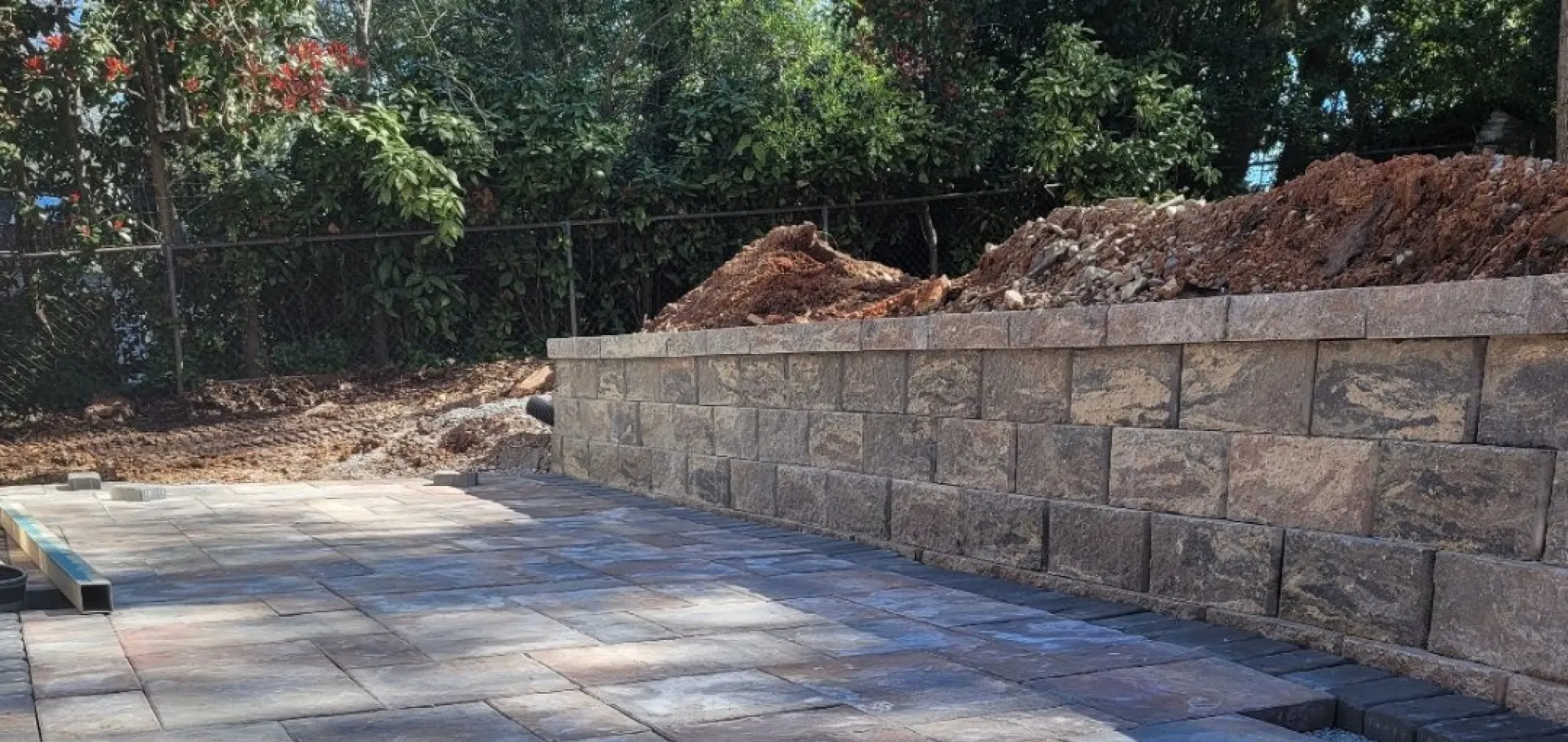Building a retaining wall in your yard is a significant project. As such, you’ll want to ensure that you select the best building materials for the job from the get-go. In this post, we’ll help you make that decision by covering two of the most widespread retaining wall material options – blocks and railroad ties.
Block Retaining Walls
Using blocks to build your retaining wall is certainly an excellent idea. Block retaining walls are incredibly long-lasting. In fact, if your block retaining wall is built properly, it won’t need to be replace during your lifetime. The durability of block retaining walls also allows them to be built taller than walls that consist of other materials.
In addition to that phenomenal longevity, block retaining walls are also very affordable and come in many different options. As you search for the perfect block material for your wall, you’ll find plenty of colors, textures, and shapes to choose from.
Admittedly, some people do not feel that block retaining walls are as ornamentally intriguing as other retaining wall material options. However, this by no means implies that all block walls are ugly. Instead, block retaining walls can be quite tasteful while also remaining structurally sound for the foreseeable future.
Railroad Tie Retaining Walls
Railroad tie retaining walls are also incredibly popular for small-scale projects. What people often love about these walls is that they have a very natural look that can complement nearly any landscape. However, there are a few downsides to railroad tie retaining walls that you should understand before you build one.
Since wood will naturally decompose over time, railroad tie retaining walls are not as long-lasting as other types of retaining walls. In many cases, railroad tie walls will last just one to two decades. Railroad tie walls can also be prone to structural failures if you build them too tall. In general, it’s best to keep these walls below four feet tall to give them the best chance of remaining intact.
To combat the natural decomposition of wood, many railroad ties are treated with chemical wood preservatives. Unfortunately, those chemicals can be harmful to you and the plants in your landscape. With that said, for those who want a retaining wall with a natural look for a reasonable cost, using railroad ties may be a reasonable way to go.
A Few Other Retaining Wall Material Options
Although both blocks and railroad ties are both legitimate options for your retaining wall, there are plenty of other materials you can use. To help you better understand the options at your disposal, we’ve listed a few other retaining wall materials for your consideration:
- Natural stone
- Poured concrete
- Gabions
- Brick and mortar
If you find that neither blocks nor railroad ties are right for you, know that there are plenty of other choices, and those in the list above are some of the best ones.
Block or Railroad Ties – The Choice is Up to You
Overall, the choice between block and railroad tie retaining walls is largely a matter of personal preference. The sections in the article above should give you a good idea of which option you prefer. If you are ready to build your retaining wall or need further insights to help you decide, contact the expert team at All Outdoors by calling 864.275.2039.

